When it comes to choosing an online platform to sell your products, deliver your services, or engage with customers, the options can feel overwhelming for entrepreneurs and small business owners.
Two popular choices are Drip and Wishpond – leading email marketing automation platform solutions. Selecting the right one for your specific business needs is crucial to scaling your company in today’s digital landscape.
In this comprehensive Drip vs. Wishpond comparison, we compare these two powerful platforms across different criteria to arm you with unbiased insights into the strengths and weaknesses of each solution so you can confidently select the best email marketing platform for your business objectives.
1. Understanding the Basics
Founded in 2013 by entrepreneurs Rob Walling and Mike Perham, Drip launched as a simplified email marketing and e-commerce platform. Over a decade later, Drip has powered over 4,500 businesses and currently leads the market for small business marketing automation. With 11K members in their official Facebook community, they have an extremely engaged user base.
Wishpond was launched in 2009, and founded by Ali Tajskandar. As a frontrunner in the sales funnel space, Wishpond brags about its ability to turn cold traffic into leads and sales. While smaller than some competitors, this platform has carved itself a niche among small businesses looking to grow their marketing and conversions. Wishpond also has an active Facebook page with 28K followers who regularly discuss strategies using the platform.
Selecting between these two platforms means weighing their strengths and differences. Understanding their background sets the stage for comparing their features and performance in meeting a business’s sales funnel and customer engagement goals.
2. Features and Functionality
Automation
Drip
Drip stands out for its powerful email marketing and automation features optimized for e-commerce. Users can create workflows to segment contacts, trigger personalized emails, and track conversion events.
For example, you can set up a welcome series to onboard subscribers or a lead score recipe to nurture contacts based on behaviors. Drip also offers e-commerce-specific automation like abandoned carts and post-purchase follow-up emails.
Advanced features like customer lifecycle stages, if/then branching, and JavaScript segments give savvy marketers endless customization abilities.
Wishpond
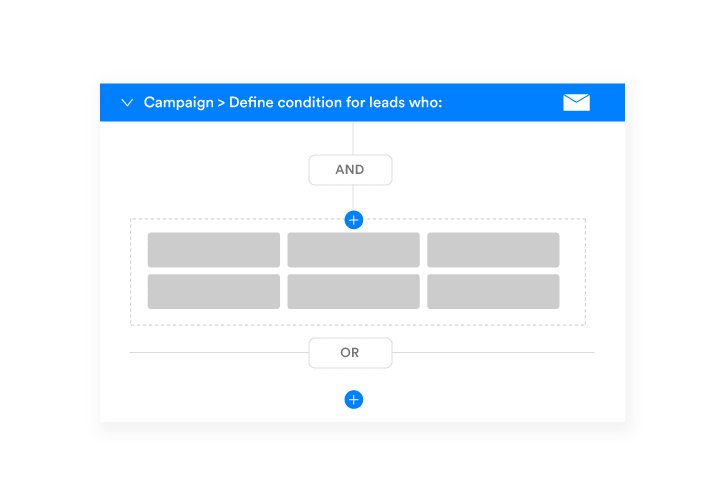
Wishpond focuses its automation capabilities on converting website visitors into leads and customers. Users can create popups, landing pages, forms, and campaigns that trigger based on time or actions.
For example, you can set up a Welcome Mat campaign to convert visitors into email subscribers. Or use an exit-intent popup to offer a special discount to visitors who are about to leave. Wishpond also offers lead scoring and email drip campaigns to continue nurturing new contacts.
While automation is better geared for front-end conversions than complex segmentation, it provides the core tools needed to turn cold traffic into leads.
Winner: Drip
When it comes to marketing automation software tailored for e-commerce, Drip comes out ahead. Its segmentation abilities, email campaign options, and built-in features like abandoned carts make it easy for stores to maximize revenue. For users focused solely on lead generation, however, Wishpond provides the essential popups, landing pages, and email follow-ups to increase sign-ups, making it the better alternative of the two marketing automation tools.
Email Templates
Drip
Drip comes equipped with over 100 responsive email templates created specifically for e-commerce stores. Templates range from cart abandonment and browse abandonment emails to shipping confirmation messages, returns communications, and more.
Templates feature best practices for layout, copy, images, and calls-to-action optimizing emails for engagement and conversions. They also work on mobile and desktop without additional formatting.
While templates cannot be edited within the email marketing software itself, they can be exported to HTML for customization and to help you better manage marketing campaigns. Advanced users can also build emails from scratch using Drip’s drag-and-drop builder or by uploading their own HTML email code.
Wishpond
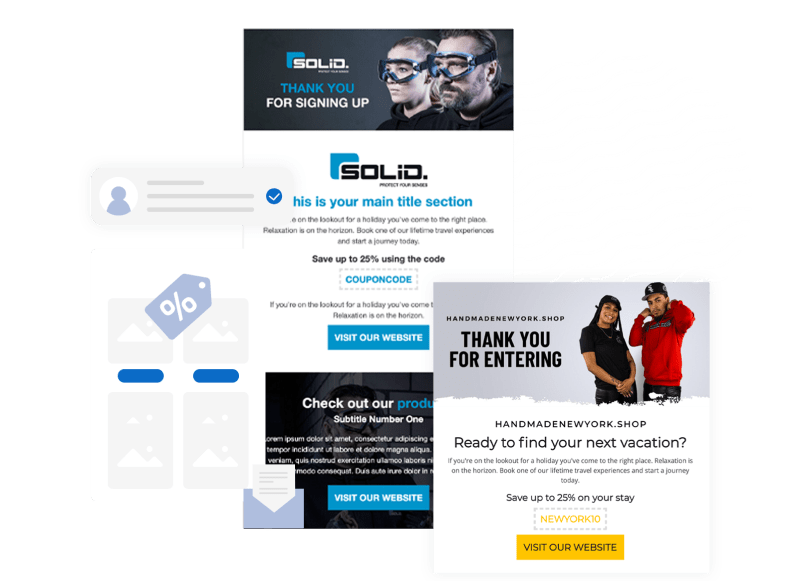
Wishpond offers over 40 professionally designed email templates for welcome/onboarding sequences, promotions, announcements, sales, and more. Templates are geared primarily towards list-building and lead nurturing rather than complex e-commerce communications.
Templates feature polished designs and layouts, with basic editing available within Wishpond. Limited customization options allow adding images, editing headlines/subheads, and swapping some content blocks. Most significant changes, however, require exporting the template and editing the raw HTML/CSS externally.
Unlike Drip, Wishpond templates focus on branded announcements, signup confirmations, lead nurturing, and basic promotions rather than complex e-commerce communications and lifecycle emails.
Winner: Drip
With triple the email templates specifically designed for e-commerce stores, Drip is the clear winner for out-of-the-box email capabilities relevant to online sellers. From cart and browse abandonment to shipping confirmations and returns, Drip has store owners covered for critical customer lifecycle touchpoints.
While Wishpond offers beautifully designed basics, only Drip’s marketing platform provides the specialized e-commerce templates that conversion-focused stores need.
Segmentation
Drip
Drip provides powerful segmentation options for sending targeted, personalized communications. Users can create segments based on customer behaviors like email opens/clicks, visiting certain pages, submitting forms, and more.
Drip also enables segmenting by customer properties like location, lifetime value, order totals, and custom field values. Complex segments can be built by combining multiple traits with logic such as “Opened Email A AND Has Made a Purchase in Last 30 Days”.
Additionally, Drip allows for automated segmentation based on workflows and conversion events. For example, customers can move into new lifecycle stage segments when they purchase for the first time or after a high number of orders.
Wishpond

Wishpond enables basic segmentation for email and pop-up campaigns based on lead properties and behaviors. Users can target groups who have opened emails, clicked links, visited specific pages, submitted forms, or been tagged in certain ways.
The email marketing platform also supports basic personalization with merge tags to display first names. However, complex behavioral-based segmentation, lifecycle management, and personalization for individual messaging are not as fully featured compared to Drip.
Most segmentation in Wishpond happens through one-time tagging rather than ongoing, automated segmentation rules. This limits set-it-and-forget abilities compared to Drip but still enables basic targeting.
Winner: Drip
With its robust tagging models, combination-based segment building, and automation-driven grouping, Drip has far superior segmentation abilities compared to Wishpond and other email tools like Campaign Monitor, especially for e-commerce stores.
Drip lets you slice and dice your customers in every way imaginable, enabling personalized communications that maximize customer lifetime value in just a few clicks. For users focused just on one-time segmentation, Wishpond provides the basics but can’t compete with Drip’s advanced capabilities.
Analytics
Drip
Drip provides robust analytics to track email and landing page performance. Users can view key metrics like open, clickthrough, and conversion rates for each campaign. The platform also tracks customer engagement over time with reports on email activity, page visits, and revenue by lifecycle stage.
E-commerce sellers can dive deeper with customer cohort analysis, total customer value, and sales performance metrics like average order value and repurchase rate. AttentionHeatmaps display where customers click on each email campaign layout.
While analytics focus specifically on email and landing page data rather than ad performance or broader site tracking, Drip gives sellers clear visibility into campaign ROI and customer engagement.
Wishpond

Wishpond includes basic analytics showing opens, clicks, and conversions for each email and landing page campaign. Users can view metrics like open and clickthrough rates over time to optimize content.
For pop-up campaigns, Wishpond displays conversion rates for each variation as well as scroll depth data showing where visitors tend to convert. Email reports also show links clicked and customer geography data.
Compared to Drip, analytics focuses more on the performance of specific campaigns rather than long-term customer engagement or cohort analysis. However, key email marketing and landing page metrics are still available at a glance.
Winner: Drip
With its customer lifecycle analytics, cohort analysis, and richer e-commerce data, Drip handily beats Wishpond for actionable analytics. While Wishpond provides campaign basics, only Drip gives sellers the customer intelligence they need to refine messaging and maximize lifetime value over time. For users focused solely on short-term campaign metrics, Wishpond checks the boxes, but Drip goes much further.
Unique Features
Drip
Drip shines when it comes to deep e-commerce integrations, facilitating advanced segmentation, workflows, and automation based on customer order data and behaviors. The platform seamlessly syncs with all major e-commerce platforms like Shopify and WooCommerce.
This powers unique offerings like Drip’s shopping cart abandonment triggers, enabling merchants to automatically send cart recovery emails to re-engage customers. For subscription companies or membership sites, Drip also provides tailored features around subscription management, renewals, upsells, and win-back campaigns for lapsed members.
Wishpond
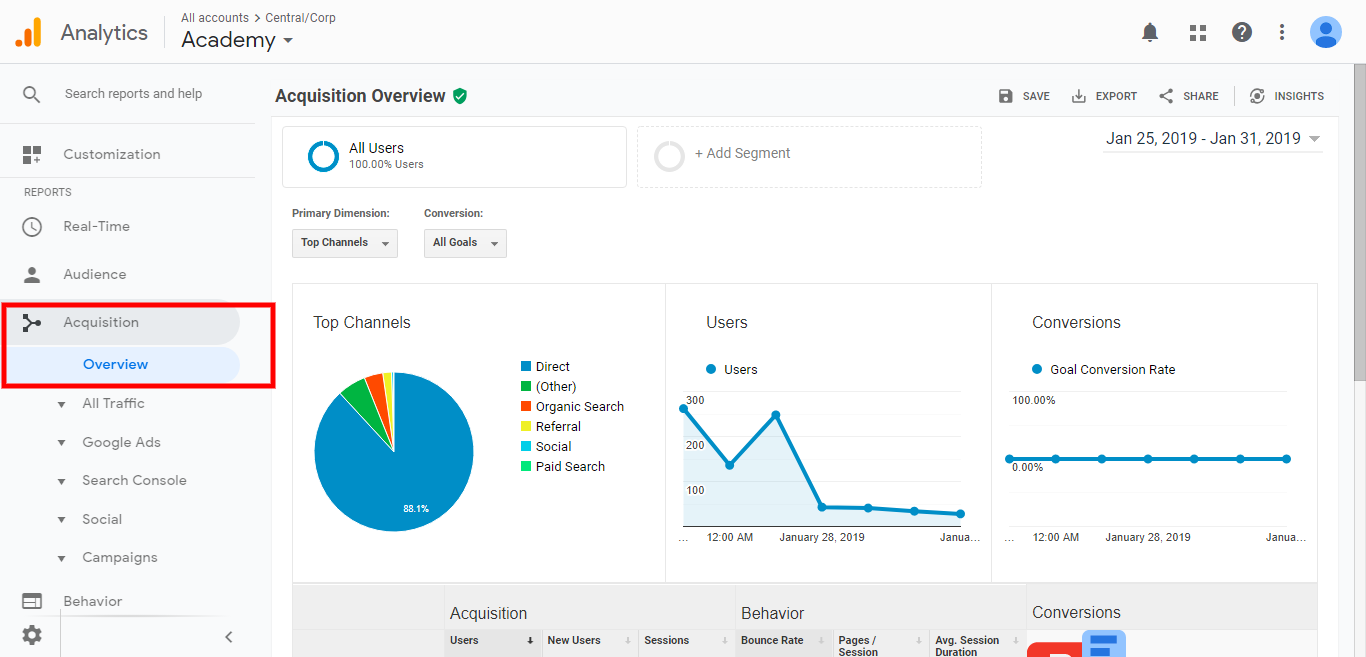
On the Wishpond side, some of its unique capabilities cater more to lead generation over complex e-commerce automation. Wishpond offers an intuitive, drag-and-drop landing page editor with 150+ blocks and templates, allowing users to quickly build custom pages without any coding knowledge.
The platform also provides a Funnel Starter feature, which recommends proven funnel templates tailored to the user’s business type, accelerating setup. Additionally, Wishpond’s Evergreen Webinar offering transforms prerecorded video content into automated, evergreen webinars that continue collecting contact information from engaged viewers over time. This converts traditionally passive video viewers into leads.
Winner: Tie
Both Drip and Wishpond have standout unique features aligned to their respective strengths in e-commerce automation versus lead generation. For merchants with order tracking and recovery needs, Drip guarantees the most powerful shopping cart automation right out of the box.
But for users focused solely on building their email list and conversions, Wishpond’s landing page editor, templates, and Evergreen Webinars provide an unparalleled lead generation toolbox. Ultimately the ideal platform depends on the company’s goals and priorities.
3. Ease of Use
Drip
Drip prides itself on an intuitive user experience that makes email marketing more accessible. The visual workflow builder enables drag-and-drop automation without complex coding. Campaign creation also uses an intuitive editor to review copy, layout, and design side-by-side.
While advanced options sometimes hide beneath submenus, key features for sending broadcasts, setting up automation, and reviewing analytics display prominently. For further simplicity, Drip offers both pre-built templates and 1-click integrations with major e-commerce platforms.
The platform keeps new users in mind with guided walkthroughs for setting up common workflows. Responsive in-app and email support assists with any troubleshooting. The greatest learning curve comes from mastering Drip’s extensive segmentation options which provide endless possibilities but can overwhelm beginners.
Wishpond
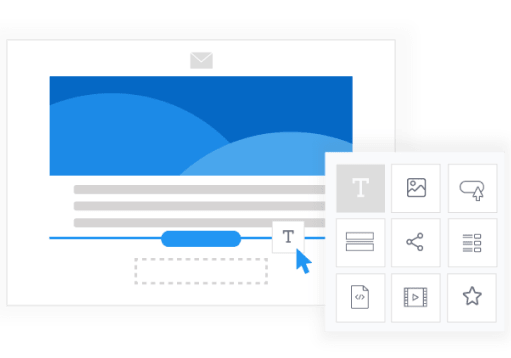
Compared to Drip, Wishpond focuses more on simplicity and intuitive creation guided by templates. The landing page and campaign builders make wide use of drag-and-drop blocks, requiring no coding expertise. Pre-built templates and one-click integrations also accelerate setup.
While some features like webhooks dive deeper, the tool prioritizes simplicity over advanced controls. Streamlined dashboards display campaign analytics and lead engagement metrics without complexity.
For new users, Wishpond’s templates focus on visual editing speed time-to-value. An online knowledge base supplements in-app guidance and support assist further. The tool prides itself on quick, intuitive creation without requiring advanced expertise upfront.
Winner: Tie
Both Drip and Wishpond emphasize usability and have strongly positive user experiences tailored to their respective categories. Drip provides visual workflow automation and guided onboarding to simplify sophisticated email capabilities.
Meanwhile, Wishpond accelerates landing page and funnel creation through versatile templates requiring no coding. Ultimately both platforms succeed at making robust marketing tools intuitive and accessible to new users.
4. Email Deliverability
Drip
Drip facilitates excellent email deliverability through dedicated IP addresses and automatic list cleansing. Each Drip account gets a separate IP with quality monitoring tools to maintain the sender’s reputation. Invalid or unengaged subscribers automatically fall off lists to keep engagement metrics high.
The platform also allows end users to customize subscriptions and unsubscribe preferences. Granular targeting, effective segmentation, and relevant content also bolster deliverability.
Additionally, Drip leverages machine learning to optimize sending times and frequency for each subscriber segment. This reduces complaints while improving open and clickthrough rates.
Wishpond

Wishpond also provides dedicated IPs for each customer to protect the sender score. Invalid addresses automatically clear from the database with users controlling re-engagement rules for dormant subscribers.
The company monitors emerging ISP policies and authentication standards to advise on best practices. Templates encourage customization to reduce complaint rates and improve relevance.
However, more advanced deliverability optimizations like predictive sending based on machine learning are not as fully developed compared to Drip. This leaves further room for improvement.
Winner: Drip
With predictive send-time optimization, auto list cleansing, and more granular targeting, Drip ensures slightly better email deliverability out-of-the-box. Both platforms cover the basics well, but Drip goes a step further with machine learning to maximize inbox placement while keeping subscriber engagement high. This helps ecommerce companies improve campaign metrics and grow revenue through better deliverability.
5. Customer Support and Community
Drip
Drip provides email support, live chat, phone support, and priority ticket options to address issues quickly. All users also get access to the platform’s robust knowledge base with articles, videos, and webinars.
For community support, Drip facilitates an extremely active Facebook group. The community allows users to get feedback, share advice, and access additional resources from engaged peers.
Wishpond
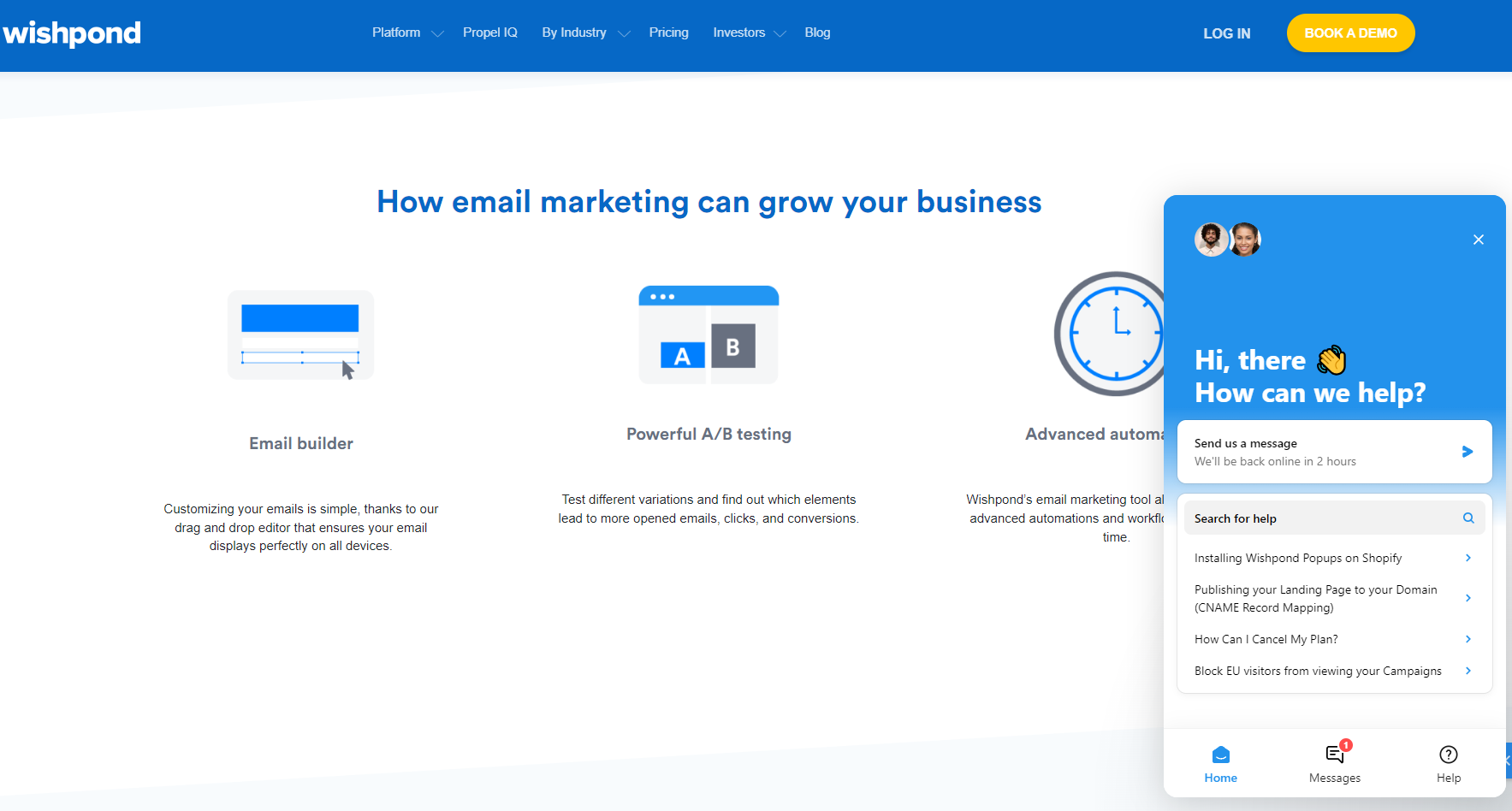
Wishpond offers email ticketing, live chat, and phone support for customers across three tiers. While advertising 24/7 support, average response times appear closer to 6-8 hours.
The company’s help center provides an extensive library of tutorials, ebooks, infographics, and video walkthroughs for self-service. Wishpond also hosts a small but growing Facebook community for peer discussions.
Winner: Drip
With more support coverage options, a large peer community, and expansive self-help resources, Drip edges out Wishpond for customer support experience. Wishpond checks all the fundamental boxes but has yet to match the scale of Drip’s extremely devoted follower base willing to provide additional assistance. For now, Drip continues leading the pack when it comes to customer guidance.
6. Integrations
Drip
Drip provides deep integrations with all the major e-commerce platforms like Shopify, WooCommerce, and BigCommerce. These facilitate connecting customer and order data to advanced workflows and personalization.
Over 750 other app integrations are also available via Zapier including webinar tools, chat platforms, accounting software, and marketing analytics. Users can connect key business systems to transfer data between tools.
Integrations focus specifically on syncing e-commerce stores, CRMs, email services, and marketing analytics rather than broader business software. But Drip covers the core set needed for executing effective marketing campaigns.
Wishpond
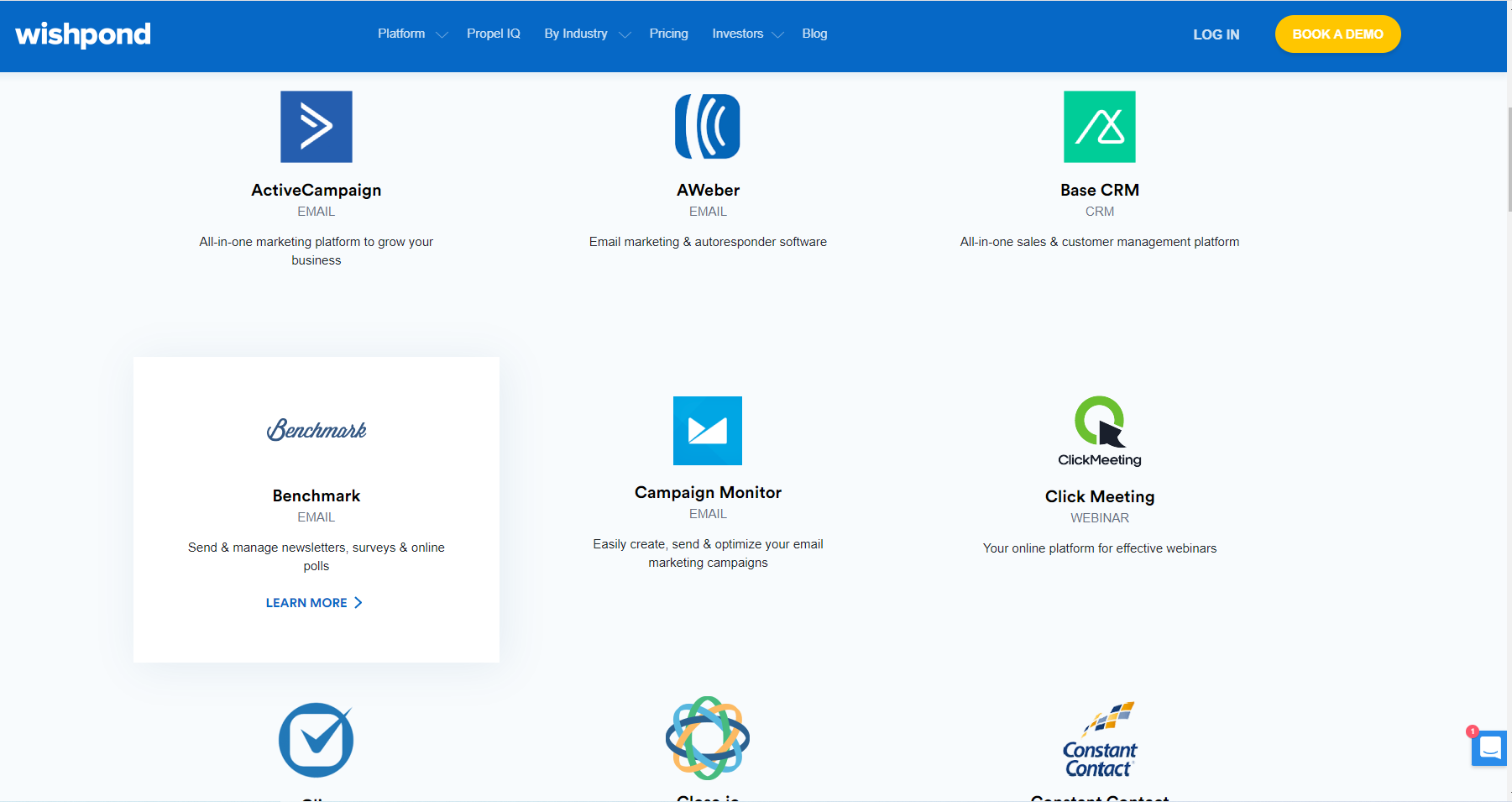
Wishpond offers over 50 native integrations focused primarily on email, calendar, and web conferencing tools like Gmail, Outlook, Zoom, and GoToWebinar. These allow pushing new leads captured through popups and landing pages into external systems.
For broader connections, Wishpond leverages Zapier to access hundreds of other apps. Priority lies with transferring lead data outwards rather than pulling customer data from e-commerce platforms into the platform.
Comparatively, integrations focus less on backend big data synchronization and more on streaming lead contact info outward to drive follow-up. But key marketing and sales tools interconnect.
Winner: Drip
With its breadth of native e-commerce integrations centralizing customer data for targeted campaigns, Drip is the winner for unified connections. Wishpond reliably pushes new lead data outward but does not pull existing customer intelligence already within external platforms. Drip’s robust syncing abilities give marketers more avenues to execute personalized messaging driving revenue.
7. Pricing
Drip
Drip has a simple pricing structure based on the number of contacts in your list. The lowest plan costs $39/month for up to 2,500 people. You can sign up for a free trial on the platform to test out the software before committing to a paid plan.
All plans include unlimited emails, and access to core features like automation, analytics, and integrations.
Higher tiers offer more contacts, additional CRM, and e-commerce integrations. You can compare multiple versions and use each version generated to see which one has better open rates and how much revenue you can expect.
Wishpond

Wishpond does not advertise its pricing plans, but you can book a time to speak with a specialist to get a custom quote. The platform also offers product demos showcasing setups and platform walkthroughs.
Winner: Tie
Both Drip and Wishpond keep pricing straightforward basing costs almost solely on the number of contacts under management. Models scale identically from $49 to custom enterprise quotes as databases expand. Feature access and capabilities stay consistent across tiers with no loss of functionality. Ultimately pricing offers parity across both tools.
8. Reviews and Reputation
Drip
Drip earns overwhelmingly positive reviews across credible software review sites. On G2, they hold a 4.4/5 average from over 450 reviews highlighting excellent ease of use, great support, and intuitive automation.
Specific praise goes to Drip’s segmentation abilities, email deliverability, and deep e-commerce integrations. Some users do think basic analytics and reporting could expand further and mobile needs continued optimization.
But most agree Drip provides unmatched capabilities specifically for email marketing-focused e-commerce stores over more generalized competitors.
Wishpond
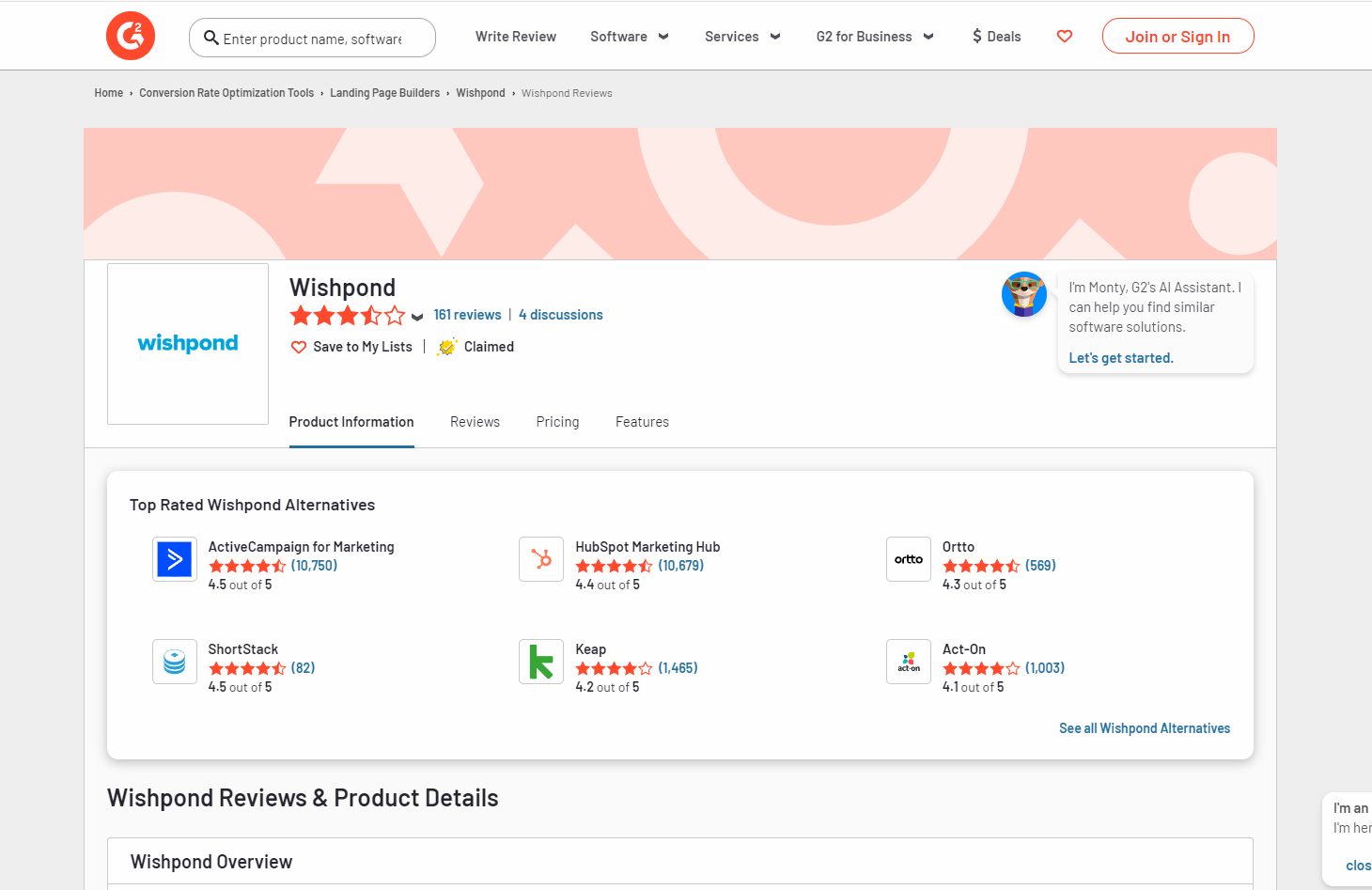
Wishpond also scores positively across review sites like Capterra and Software Advice. They hold a 3.7/5 on G2 among smaller sample sizes, performing especially well in ease of use and quality support.
Aspects like the landing page and popup builder earn high marks for enabling intuitive design without the coding skills needed. Sometimes onboarding and learning resources come across as confusing for brand new users.
But for lead and conversion-focused small businesses, reviewers validate Wishpond’s robust capabilities and template-driven approach to accelerating growth.
Winner: Drip
With almost triple the reviews and slightly higher average scores, Drip edges out Wishpond for most positive reviews and reputation to date. Both facilitate powerful marketing automation in their respective categories. But Drip garners more enthusiastic feedback specifically from online sellers with complex email segmentation and customization needs. Still, both continue building their reputations successfully.
9. FAQ’s
Drip FAQs
- Does Drip offer free trials or money-back guarantees?
Yes, Drip provides a standard 14-day free trial to test the platform. They also have a 14-day money-back guarantee if users are unsatisfied. - What e-commerce platforms does Drip integrate with?
Drip offers deep native integration with every major storefront including Shopify, WooCommerce, BigCommerce, Magento, and more. - Is there a cap on contacts, emails sent, or automation created?
No, the only caps are on contact database size which determines monthly pricing. Everything else remains unlimited across all pricing tiers. - Can Drip build full website landing pages?
No, Drip focuses specifically on email marketing campaign pages. For full websites, users need an external site builder that can integrate. - Does Drip support text message marketing or SMS campaigns?
Not natively, but some users connect SMS tools like Mobiniti via Zapier integrations to add this capability.
Wishpond FAQs
- Does Wishpond offer free trials?
Yes, Wishpond provides a 14-day free trial requiring no credit card to access core features. - What integrations come included?
50+ native integrations are available including email, calendar, conferencing, and support tools. Zapier enables 100s more. - Are there caps on contacts, traffic, or funnels?
No hard caps exist, but higher tiers are required to access features like advanced pop-ups or priority support response times. - Can Wishpond host full websites?
No, Wishpond focuses specifically on landing pages, popups, and basic one-page sites rather than full-content websites. - Is there built-in blogging or newsfeed functionality?
Currently, Wishpond lacks any native blogging features – users need to connect external blog content via API integrations.
Final Thoughts
Choose Drip if…
…you are an ecommerce company focused primarily on email marketing automation. Drip’s unmatched email capabilities, shopping cart integration, customer segmentation, and real-time order syncing make it the prime choice for complex subscriber messaging. Conversion-focused online stores with large product catalogs stand to benefit the most.
But, at this point, there is the possibility that you simply don’t find this platform appealing. If that’s the case, I recommend checking out some Drip alternatives to find a better fit for your email marketing needs.
Choose Wishpond if…
…you are a small business focused mainly on lead generation and landing page conversion optimization. Wishpond’s intuitive pop-up, landing page, and form builders accelerate list growth without the technical skills needed. The templates and focus on engagement over complex automation cater to early-stage customer acquisition goals.
